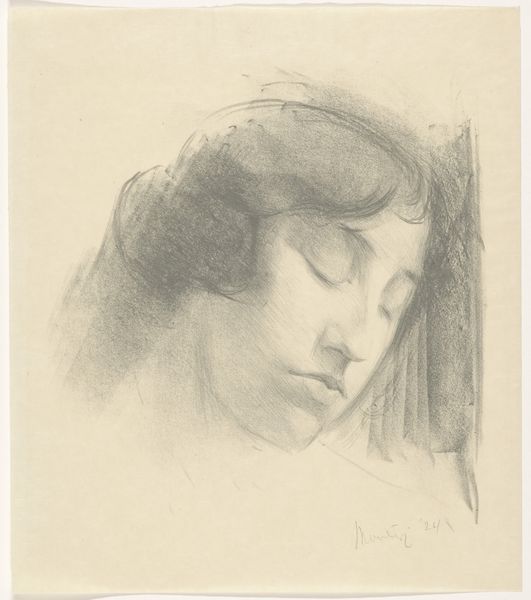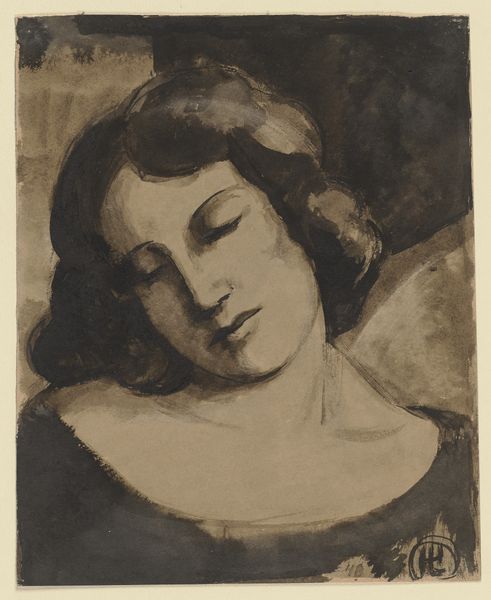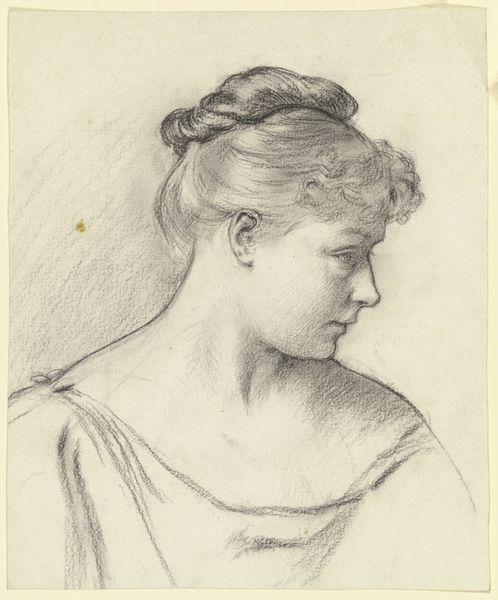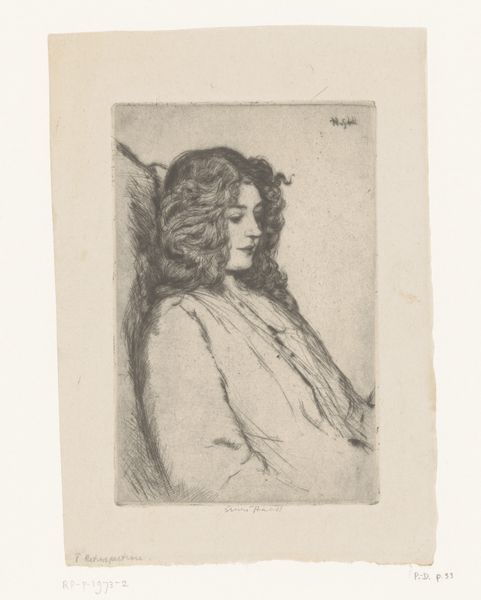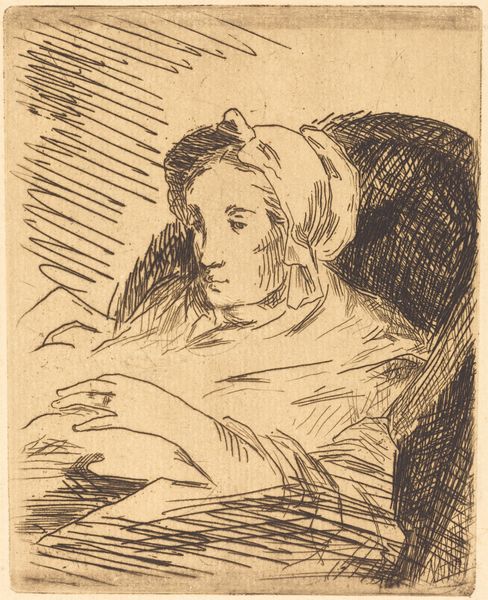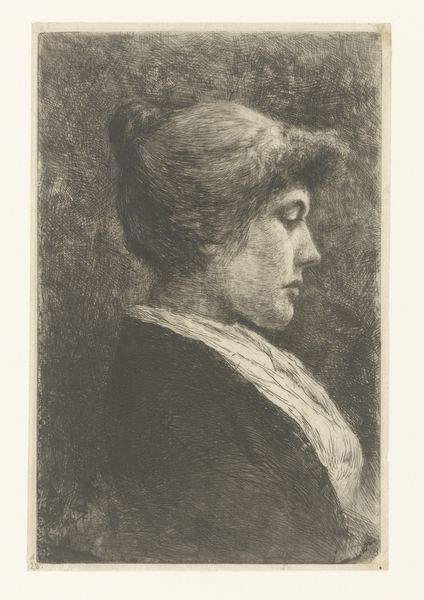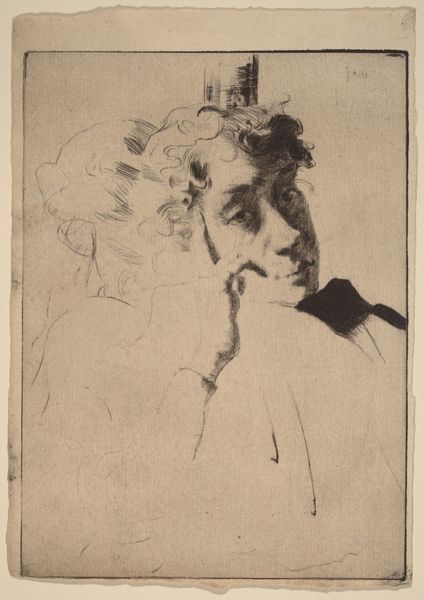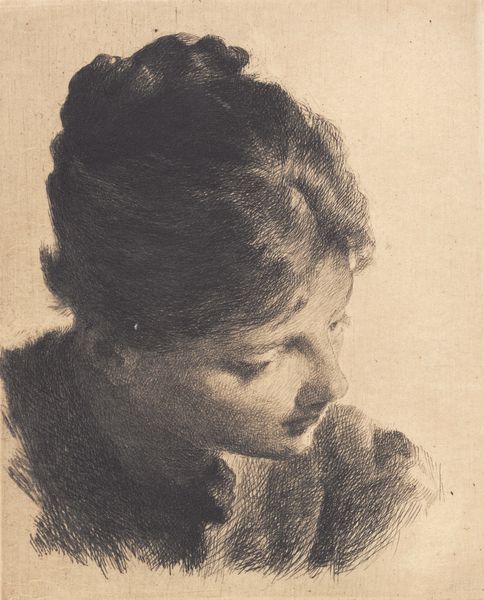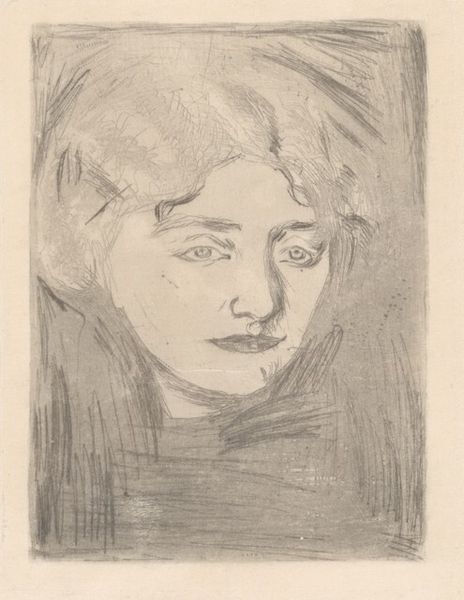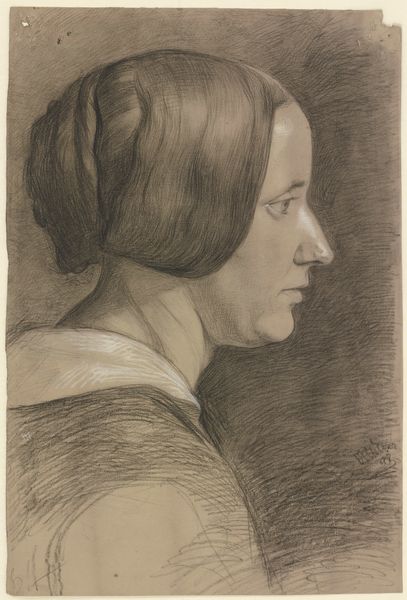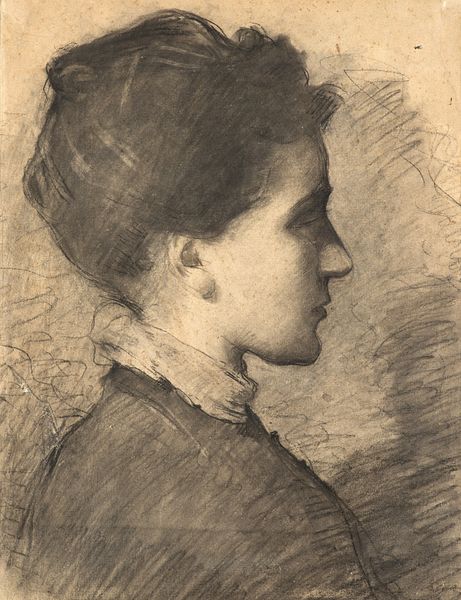
Portræt af Kathrine (Ketty) Mathilde Antonia Nielsen, f. Rask. (f. 1878, g.m. billedhuggeren Kai Nielsen i dennes første ægteskab.) 1879 - 1910
0:00
0:00
drawing, charcoal
#
portrait
#
drawing
#
charcoal drawing
#
symbolism
#
portrait drawing
#
charcoal
#
realism
Dimensions: 473 mm (height) x 389 mm (width) (bladmaal)
Editor: This charcoal drawing by Oluf Hartmann, "Portræt af Kathrine (Ketty) Mathilde Antonia Nielsen," is incredibly striking. Dating from between 1879 and 1910, there’s something quite somber about it. What do you see in this piece, especially considering the materials? Curator: I am immediately drawn to the interplay between the charcoal, the paper, and the social context of portraiture at the time. Consider charcoal— a readily available, inexpensive material. Why choose this medium for a portrait, traditionally a domain of oil paints and displays of wealth? Hartmann is making a statement about the accessibility of art, about labour, and perhaps even subtly commenting on class. Editor: So, it’s less about the individual and more about the means of representing them? Curator: Precisely. Think about the sitter, Kathrine Nielsen, married to sculptor Kai Nielsen. Was this portrait commissioned, or a study? Understanding the material conditions of its production – where it was made, by whom, for what purpose – opens up broader questions about artistic patronage and the role of women within artistic circles at that time. We need to examine labor, materiality, and consumption, as they inform meaning. What does the economy of art during that period tells us about such an approach? Editor: I see your point. Looking at the confident strokes of charcoal, it does feel like there's an intention behind using something so...fundamental. Curator: Exactly. Charcoal also leaves a residue; it marks and stains, it cannot pretend. Think of the artist's hand at work. We are so trained to ignore such evidence, and simply view the likeness it produces. Editor: That’s fascinating. I never really considered the inherent message in the materials themselves. Curator: Understanding the material composition is essential; it reveals choices, intent, and the artist’s position in a broader economic and social context. Now, consider the scale... how does this relative monumentality impact the experience of this work as a product of society, time, and intention? Editor: It gives you a new respect for the artist’s intention and challenges the view on the art process. Thanks!
Comments
No comments
Be the first to comment and join the conversation on the ultimate creative platform.
